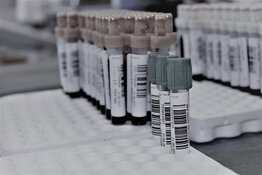The Life Sciences Report: Your written research is meticulous and impressive. How did you pick your oncology/immunotherapeutics category?
Mara Goldstein: First and foremost, I'm a big believer in therapeutic coverage for a variety of reasons. One is that it allows for greater domain knowledge, as well as depth and breadth of coverage. When I began to formulate a coverage list, I immediately decided that oncology would be my first focus. As a subsector of biotechnology, oncology is represented by the greatest number of drugs in development versus other subsectors, and the diversity of companies and technologies is very compelling.
I also identified immunotherapy as an underappreciated area. The cancer vaccine market has been tarnished by clinical failures of the past and the commercial disappointment of Provenge (sipuleucel-T) Dendreon Corp. (DNDN:NASDAQ), since its launch in 2010. But the sector has advanced, both technologically and clinically, and many current late-stage clinical trials incorporate advances in patient selection, trial design and scientific understanding about the immune system and cancer, including tumor microenvironment. Many late-stage therapeutic cancer vaccines are also commercially appealing because they are considered "off the shelf" and do not require the collection of biological matter from patients.
TLSR: You have one very large-cap company in your mix, whereas most of your coverage is smaller. Why is that?
MG: As I have chosen to focus on oncology, I want to create a diversified portfolio. This includes technology, indications and market capitalizations. Initially I rolled out coverage on a handful of companies working the field of immunotherapy. These companies represented different approaches to therapeutic cancer vaccines, and ranged from small to mid cap, but were predominantly focused on solid tumors. Hematology is a fascinating area of drug discovery and development, so I wanted to add companies to my coverage list that were dedicated to drug discovery and development in that area. Celgene Corp. (CELG:NASDAQ) is among a select group of biotechnology companies with a market capitalization above $15 billion (B), and is the largest company working in the hematology field today. For these reasons, it seemed like a natural fit for my overall strategy to build a coverage list with broad domain knowledge.
"As a subsector of biotechnology, oncology is represented by the greatest number of drugs in development, and the diversity of companies and technologies is very compelling."
I plan to add companies to my coverage that complement my current list, both in focus and market capitalization. I also have plans to leverage immunotherapy and my basic knowledge of the immune system into other biotechnology subsectors, such as autoimmune and infectious disease Ultimately, I don't see my coverage as being limited to oncology, but rather I view it as a strong launchpad for wider coverage of the biotechnology universe.
TLSR: Mara, we've seen some significant acquisitions this year. We saw the big one with Gilead Sciences Inc. (GILD:NASDAQ) and Pharmasset Inc. Hepatitis C virus (HCV) has been a very strong focus for acquisition; it is the disease indication of the year. We just saw Amylin Pharmaceuticals Inc. (AMLN:NASDAQ) get taken out by Bristol-Myers Squibb Co. (BMY:NYSE) for $5.3B. This is clearly positive for biotech. Have we come out of the biotech funk? Is the industry ready to be a serious long-term mover again?
MG: That is an interesting question. Acquisitions have been a part of the biotechnology industry for a long time. But reduced stock prices, patent cliffs and the growth paradox—the bigger you get, the more sales you need to move the needle—has created an environment that is very conducive to mergers and acquisitions (M&A). Add in a less-friendly public financing environment, and that facilitates industry consolidation.
While pipeline is king, biotechs have other assets that are compelling to partners, such as manufacturing capabilities. In fact, Bristol executives highlighted Amylin's manufacturing capacity as compelling. It was probably not the singular reason for the acquisition, but perhaps a piece of it. Since 2008, which is when the market really began to struggle and access to capital tightened appreciably, somewhere north of $250B in biotech M&A transactions have occurred globally. Excluding the Roche Holding AG (RHHBY:OTCQX)/Genentech acquisition in 2009, M&A transactions still totaled well over $200B, a pretty sizable figure.
TLSR: You said moving the needle on large-cap companies was difficult. But you follow Celgene, with a $28B market cap. Why did you add it to your coverage?
MG: As I mentioned earlier, there are very few "ultra" large-cap biotech stocks and Celgene does fall into that category. Since I want my coverage to be representative of all investment options, I can't exclude companies based on size, either small or large. Celgene, by virtue of its portfolio and pipeline, fits into a core area of my coverage universe. And because the company has a large pipeline and is actively trying to diversify into new therapeutic areas, the potential to deliver meaningful upside is present. For instance, Celgene has numerous partnerships with smaller biotechnology companies that have cutting-edge technologies, providing a window into novel technologies and products.
Biotechnology is exciting to cover, if for no other reason than it is at the forefront of medical innovation and can produce dramatic changes in valuation. Theoretically, every dollar that is put to work in discovery and development has an equal chance at producing a return. This applies to small or large companies, or ones in between. I think it makes perfect sense to cover a range of capitalizations.
TLSR: Doesn't Celgene need to start paying a dividend? Why would you invest in that?
MG: Celgene management has stated that it believes the company has a lot of growth ahead. As for paying a dividend, most of the company's sales and earnings today are driven by one product, Revlimid (lenalidomide, for the treatment of multiple myeloma and myelodysplastic syndromes [MDS]). While it's a very profitable product and enjoys a long patent life, issuing a dividend with such revenue concentration may not be the wisest course of action, because anything can happen down the line. What if you wake up tomorrow and the market for Revlimid has changed appreciably? Where do you go from there?
"Biotechnology is exciting to cover, if for no other reason than it is at the forefront of medical innovation and can produce dramatic changes in valuation."
Offering a dividend can change the pool of potential investors in a stock. However, I'm not sure what threshold would be meaningful to shareholders. Does a dividend need to provide a yield in line with the market (perhaps NASDAQ or the S&P 500) to be a practical consideration for investment in a biotechnology stock? Or is it better to deploy capital in internal research and development (R&D), and selective technology and product acquisitions? So far, the latter has been the predominant strategy for biotechnology companies.
TLSR: What is the next catalyst for Celgene? Would it be the approval of pomalidomide?
MG: Celgene, because it is a commercial company, will have a couple of catalysts. One will be delivering more consistency on an earnings basis. The company did not have a great reporting period in Q1/12. I also think pomalidomide is a piece of the catalyst puzzle, because it would advance Celgene in the multiple myeloma field, in which it is already a leader. In addition the company is looking at new indications for Revlimid, and potentially new avenues for growth from its non-hematology pipeline.
Celgene did experience a setback in Europe, with the withdrawal of the Revlimid application for first-line maintenance of multiple myeloma. That was unfortunate. But the company is looking at other indications for Revlimid, which are potential opportunities for additional growth.
Celgene has a core portfolio of successful products: Revlimid, Vidaza (azacitidine, also for treatment of MDS) and Abraxane (paclitaxel, for treatment of metastatic breast cancer). But of these products, only Revlimid was self-developed. The others came to the company via acquisition. For Celgene to move to the next level, I believe we need to see more of the company's internal assets, rather than purchased assets, become commercial products.
TLSR: Why do you like Celgene?
MG: One of the interesting things about Celgene—and this is one of the reasons I like the company—is that it has a lot of financial flexibility, driven by Revlimid's profitability. Subsequent to the withdrawal of the Revlimid application in Europe for broader use, the company reaffirmed guidance. That is important because the expected additional Revlimid revenues in Europe were meaningful to the company and reaffirming guidance suggests that Celgene can withstand a blow to the top line. While biotech investors don't necessarily apply growth from cost savings and operating leverage to investment criteria, it is a piece of the fabric of Celgene that cannot be dismissed. I also believe that expectations for new product candidates are fairly modest, and hence could deliver upside.
TLSR: You have twice mentioned that setback in Europe—withdrawing the Revlimid application for first-line maintenance. Does the company have that indication in the U.S.?
MG: Revlimid, in combination with dexamethasone, is recommended by the National Comprehensive Cancer Network (NCCN) in its guideline recommendations as a preferred regimen for primary therapy for both transplant and non-transplant candidates, and as maintenance therapy. By inclusion in the NCCN guidelines, insurers will typically cover the drug, which facilitates usage.
TLSR: Let's move on to another company. Which do you like most?
MG: I like companies developing products that have major applications with identifiable milestones, such as NewLink Genetics Corp. (NLNK:NASDAQ.GM). It's a small company based in Iowa that went public in late fall of last year. The company's most advanced platform technology, HyperAcute Pancreas, is novel and has the potential to have a meaningful impact on unmet medical needs—and it has thus far generated good data. The company is very quietly doing what it needs to do to put together its clinical program and has executed on milestones, advancing product candidates in clinical trials and initiating new clinical trials.
TLSR: NewLink has two technology platforms, HyperAcute Pancreas and IDO (indoleamine 2,3-dioxygenase) inhibition. You alluded to this platform earlier when you referenced Dendreon's autologous therapy. The HyperAcute program is allogeneic, which essentially means the product is based on human cells or tissues, but those cells and tissues do not necessarily come from the patient being treated. It is currently being studied in a 700-patient randomized phase 3 trial for pancreatic cancer, which is a very tough indication. The company's stock is up 62% over the past 12 weeks and 23% over the past four weeks. How can the Street be so positive on this trial?
MG: The shares have been quite strong since the initial public offering in November 2011. Like many biotechnology companies seeking to access the public market, NewLink sold shares at a discount to its filing range. But valuation expansion, in my view, has been driven by the achievement of milestones. Pancreatic cancer is a risky indication, as the disease is associated with quite dismal outcomes and there has been little in the way of therapeutic advancement in this disease state. But while risky, the potential opportunity is compelling.
"Theoretically, every dollar that is put to work in discovery and development has an equal chance at producing a return."
Thus far, the HyperAcute pancreatic program has produced encouraging data, with three-year data disclosed at this past June's American Society of Clinical Oncology (ASCO) meeting. This data, while not fully complete, suggests that at three years overall survival is 42%, a significant improvement over predicted outcomes for this disease.
At the beginning of our discussion I highlighted important advances in the field of immunotherapeutic vaccines for cancer. The HyperAcute program is an example of such advances in understanding the clinical setting, where cancer vaccines are likely to have the most impact. HyperAcute Pancreas is intended for patients who have undergone surgical resection for their disease. In this setting—stage 1 or stage 2 disease, and possibly those patients who can be surgically resected after chemotherapy treatment—immunotherapy appears to have an improved opportunity to demonstrate benefit, and can be used alongside or sequentially with standard of care. Central to the premise of this type of treatment is that patients must have longer lifespans, allowing time for the body's immune system to make a meaningful contribution to outcome. While HyperAcute Pancreas is intended for "less sick" patients, the five-year survival rate for these patients is still low—though higher than for those with later-stage disease.
Because HyperAcute is a platform technology, the implications of treating other cancer indications is quite sizable. The addition of immunotherapy to standard of care is a paradigm shift in the approach to the treatment of cancer.
As for the IDO inhibitor, there has been very little discussion around the platform and the company's lead candidate. Early data presented at ASCO suggest a novel immunotherapeutic approach, and the opportunity for clinical trial advancement.
TLSR: Since the HyperAcute platform is an allogeneic therapy, how is NewLink avoiding immunotoxicity?
MG: The company's technology incorporates allogeneic cell lines that provide coverage for a variety of tumor-specific antigens, and are modified to add alpha (1,3)-galactosyl (α-gal) residues to the cell surface, which helps to generate an antitumor immune response due to the presence of preexisting, circulating anti-α-gal antibodies.
TLSR: Which companies would be likely to acquire NewLink? Would Eli Lilly and Co. (LLY:NYSE), which is already in the pancreatic cancer business with Gemzar?
MG: It is certainly possible that a company with an oncology presence, such as Eli Lilly, would want to own such a technology and product portfolio. The pool of acquiring companies seems to get smaller and smaller every day, given the numbers of mergers already occurring among larger companies. Regional treatment preferences may also drive deal-making activities. Regional partnerships in Europe and Asia are a valid strategy for a smaller company with limited resources.
TLSR: You follow Celldex Therapeutics (CLDX:NASDAQ). Did you want to talk about that company?
MG: Celldex has a huge technology treasure trove, which is very compelling. The company has a variety of different immunotherapeutic approaches to treating disease: vaccines, monoclonal antibodies, immune system modulators. Such a broad technology portfolio is attractive given the uncertainty inherent in drug development.
Celldex's phase 3 asset, rindopepimut for glioblastoma multiforme (GBM), is targeting EFGRvIII patients, a specific patient population. In this setting, patients are first treated with standard of care (surgery and, typically, chemoradiation), and then rindopepimut is administered. Since this trial could take a while to read out, the company is also examining rindopepimut in patients with recurrent disease. That could read out earlier than the front-line trial.
Additionally, Celldex recently released data for its breast cancer candidate, CDX-011, a fully human monoclonal antibody-drug conjugate targeting GPNMB-expressing tumors. CDX-011 has the potential to be a paradigm-shifting advancement in the treatment of breast cancer, as GPNMB (a glycoprotein that appears to facilitate tumor metastasis) expression has not been previously targeted as an anticancer therapy.
TLSR: Mara, it was amazing to see the data for CDX-011 in triple-negative (estrogen receptor-negative, progesterone receptor-negative, and HER2/neu-negative) patients, with 36% overall response versus 0% for the control arm of the study. This really merits attention.
MG: I agree: It merits attention. You do have to be careful with small numbers, however. In triple-negative patients with high levels of GPNMB expression, the control group did not register a response rate, either a partial or confirmed response. However, there were only three patients in this group.
Nonetheless, what I find compelling about the EMERGE study data is its linearity. That is, as the target population is defined, the data, in terms of response rates, improves. As you indicated, in triple-negative patients with high levels of GPNMB expression, the response rate was 36% for CDX-011-treated patients and 0% for the control group. In the patients with high GPNMB expression, including triple-negative and non-triple-negative tumors, response was 32%, and in patients with triple-negative disease, regardless of GPNMB response, the response rate for CDX-011-treated patients was 21%. This is suggestive, though not definitive, of a treatment effect in a defined population, and worth exploring in a larger patient population. Though not directly comparable, the absolute response rates in the EMERGE study are reminiscent of phase 2 monotherapy clinical trial results for trastuzumab (Herceptin) in metastatic breast cancer.
TLSR: What will the company and the FDA talk about at the post-phase 2 meeting? It will be about trial design, I'm sure, but will there be any movement toward hastened development in this meeting?
MG: I would imagine Celldex would like to accelerate development. That could mean a single-arm trial, which would be smaller in size. The possibility exists because of the lack of improvement in therapies for women with metastatic triple-negative disease, and the dire outcomes in this setting. I think this could be a discussion between the company and the FDA. Targeting GPNMB expression is a novel approach to treating breast cancer, and I believe that will be discussed with the FDA as well.
TLSR: Is there another company you wanted to talk about?
MG: I cover some companies with binary endpoints. Sunesis Pharmaceuticals Inc. (SNSS:NASDAQ) and Oncothyreon Inc (ONTY:NASDAQ) are two such companies. They are controversial because they are small-cap companies with major products in late-stage clinical trials. For Oncothyreon, the vast majority of its valuation is tied up in the outcome of the phase 3 trial Stimuvax trial. Merck KGaA (MRK:Xetra), the licensee for Stimuvax, has indicated that data from this pivotal trial—for non-small cell lung cancer—is anticipated in the first part of next year.
Sunesis' late-stage trial, named VALOR, is evaluating vosaroxin as treatment of relapsed or refractory acute myeloid leukemia (AML), a hematology malignancy. We expect news from an interim look at how that trial will proceed sometime in the second half of this year. In this case, the company will have the opportunity to adjust the sample size of the trial, which will add about six months onto the timeframe but potentially strengthen the trial.
TLSR: Oncothyreon has near-term revenue potential. The company's sub-$300 million market cap makes it very interesting in this case. Your target prices represent doubles for Oncothyreon and Sunesis. Going to Sunesis for a moment, will the company need a partner to launch vosaroxin?
MG: That is a good question, because the hematology field is relatively small. AML, as a disease indication, is relatively modest. If the vosaroxin VALOR phase 3 trial data are positive, that would provide a foundation for securing financing behind the product. It is possible for a small company to be successful with a contract sales force, but a partner may be better able to firmly establish the product in the marketplace.
I think Sunesis is likely to partner vosaroxin outside the U.S., but may not necessarily go that route in the U.S. I don't think Sunesis can effectively go it alone outside the U.S. It would help to have regional partnerships to guide interactions with the regulators and other constituencies that will evaluate the approvability, pricing and suitability of the drug.
TLSR: You also follow Galena Biopharma Inc. (GALE:NASDAQ) and its NeuVax (E75 peptide) vaccine to prevent recurrence of breast cancer. Did you want to mention it?
MG: Galena is the smallest company that I follow. The company is developing a peptide-based immunotherapy vaccine for breast cancer. And specifically, for women with low levels of HER2 expression.
The path to phase 3 for NeuVax has not been as straightforward as I typically like to see. But what I do like, and this goes back to my comments on Celldex, is the linearity of the data flow and how consistent it looks. The target population for NeuVax has been refined, but this has occurred through the phase 2 trial process, rather than being informed by it. This is because the standard of care in breast cancer changed through the early-development period, and the understanding of immunotherapeutic clinical trial design also evolved during this time. Both Galena's vaccine, and another peptide-based vaccine targeting low levels of HER2 expression, have produced similar results. I find that intriguing.
Galena is high-risk/high-reward with a relatively low valuation. The company is going to need to secure additional cash to continue with its clinical program. That's probably reflected today in the valuation, but it's worth watching.
TLSR: This is an interesting concept, but I wonder about the data analysis. What would be the endpoints of the vaccine trials? You can't do progression-free survival or stable disease because the patients are supposed to be disease-free when they start the vaccine. Is it going to be overall survival, or disease recurrence, or something else?
MG: It will be disease-free survival, which is different from progression-free survival (PFS). Disease-free survival aims to show that disease has not returned and that the recurrence of disease has been reduced. The opportunity in early-stage breast cancer is significant, and the market is already comfortable with the idea of preventing disease recurrence. Tamoxifen and aromatase inhibitors are widely used to reduce disease recurrence for women previously treated for early-stage breast cancer.
TLSR: Are there any other companies you wanted to mention?
MG: I recently added ImmunoGen Inc. (IMGN:NASDAQ) to my coverage list. The company and its technology have come of age, with the release of the EMILIA phase 3 data at ASCO in June. EMILIA evaluated T-DM1, a Herceptin-based monoclonal antibody conjugate, in a setting of metastatic breast cancer. T-DM1, also known as trastuzumab emtansine, is in development by Roche under a prior agreement between ImmunoGen and Genentech.
EMILIA demonstrated that women whose cancer had progressed after treatment with Herceptin and a taxane (a drug that stops cell division) had better outcomes in terms of PFS when treated with T-DM1 than women treated with lapatanib and capecitabine. Because of this, we expect that T-DM1 will receive marketing approval and ImmunoGen will receive royalties on sales of the drug. In addition to the T-DM1 partnership, ImmunoGen has several other partners, and the company is developing its own pipeline. I think there is a great deal of depth within the company, but I also believe that the near-term revenue from TDM-1, because the royalty rate is modest, isn't sufficient to warrant a higher valuation at this point in time. But the company bears watching.
TLSR: You are rating it a Hold at this time?
MG: Yes, we have ImmunoGen rated Hold.
TLSR: Many thanks to you, Mara. It was a pleasure.
MG: Thank you. I enjoyed speaking with you.
Mara Goldstein joined Cantor Fitzgerald & Co. from Thomson Reuters, where she served as director of research for Reuters Insight. Goldstein was initially responsible for the firm's healthcare research practice, and later assumed responsibility for all research activities and sectors. Prior to that, Goldstein was an executive director and senior pharmaceutical analyst at CIBC World Markets. At Cantor, Goldstein covers the biotechnology sector. Goldstein also worked at Alex Brown & Sons and CS First Boston. She holds a bachelor's degree in economics from Purdue University.
Want to read more exclusive Life Sciences Report interviews like this? Sign up for our free e-newsletter, and you'll learn when new articles have been published. To see a list of recent interviews with industry analysts and commentators, visit our Exclusive Interviews page.
DISCLOSURE:
1) George S. Mack of The Life Sciences Report conducted this interview. He personally and/or his family own shares of the following companies mentioned in this interview: None.
2) The following companies mentioned in the interview are sponsors of The Life Sciences Report: Galena Biopharma Inc. Streetwise Reports does not accept stock in exchange for services. Interviews are edited for clarity.
3) Mara Goldstein: I personally and/or my family own shares of the following companies mentioned in this interview: None. I personally and/or my family am paid by the following companies mentioned in this interview: None. I was not paid by Streetwise Reports for participating in this interview.










































